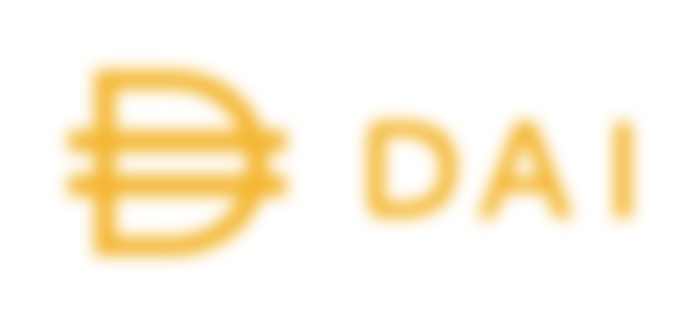Introduction
Hello everyone and welcome to a new article in my blog Vendata's journey of the crypto world! In this article, I will be looking at a significant part of our modern crypto world: stablecoins. For those that do not know what a stablecoin is, a stablecoin is a cryptocurrency on which it is pegged to another currency. For example, you could have a cryptocurrency based on the price of gold, meaning that when the price of gold drops, so does the cryptocurrency, and vice versa. What is interesting is the fact that only recently have stablecoins have become popular, storming over the past few years. Before then, there almost no stablecoins in the crypto market. The only one available was the overarching stablecoin Tether, and even then it had a minuscule market cap (less than 1 million USD)! Most of the stablecoins we think of are those which are pegged at the USD. There are other stablecoins focused on other cryptocurrencies, but these are less popular, both in reputation and market cap. Since USD stablecoins are the most popular, I will be tending towards USD stablecoins.
Tether (USDT)
When we think of USD stablecoins, we always think of Tether. It is the first and most powerful stablecoin in the market, and so is reliable and safe since there is such a high volume of trades to keep the price at the US dollar. I tend to only use Tether as my stablecoin of choice when interacting with the crypto world. Almost every crypto service will have Tether working on it if necessary, and so I have a great versatility with Tether. However, I have heard that Tether has had issues in the past with the actions it has done, most of which I believe are law related. One of them I believe is the promise Tether made that their currency is constantly equal to 1 USD, which we know is not true since it always fluctuates, and so a discrepancy is made. If you want to find out more about Tether, click here.

USD Coin (USDC)
The following stablecoin in the market is USD Coin, which I have never used before for the reasons mentioned beforehand, but have seen often throughout the crypto world. The question I have is why is their USD Coin when you have Tether, a more popular and stronger USD stablecoin marked on the same currency. Doing some research, it turns out there are massive differences, making me think less favourably of Tether. The issues I was speaking of earlier of Tether turn out to be more serious with the example I mentioned wrong. What the issue I heard was a case in 2018 when Tether created new USDT coins without promising a 1-to-1 ratio with the US dollar, which is concerning in terms of currency stability. Another great difference I found in the uses between USDT and USDC is the actions that go behind the scenes, especially with the backers which influence the cryptocurrency's potential. With USD Coin, its backers include Goldman Sachs, Silvergate, and US Bancorp, all of which are viewed as impressive organisations. For news on USDC, click here.

Binance USD (BUSD)
Next in the line is Binance USD, which as the name suggests, is a USD stablecoin from Binance. The fact that this cryptocurrency is created from Binance already tells why this US stablecoin is popular and challenging others. This is going back to what I recently mentioned earlier with backers, and BUSD has the significant backer of Binance since it was created by Binance. Another positive with BUSD is its approval from the New York State Department of Financial Services (NYSDFS), which is a reliable government organisation managing financial services/products. For more on BUSD, click here.

Dai (DAI)
Dai is another US stablecoin that I have heard quite a lot through the crypto world promoting it to others. Dai is a stablecoin that is used for the Maker protocol - a smart contract lending platform for loans by locking-in collateral for Dai. The biggest thing on Dai which I believe makes it so promoted is Dai being the first crypto-collateralised and decentralised stablecoin, meaning that you can make loans by locking in some money which sets the limit in a decentralised environment. The negative is of Dai is its soft-peg of the US dollar, meaning it is not as stable as another US stablecoins Although this negative can also be a positive being that it opens investment opportunities, I find that stablecoins should be purposed for being stable on a currency, which is less effective with Dai. However, Dai seems to be much more stable than other stablecoins over the long run. For example, Dai's ATH (All-Time High) was 1.22 USD, while Tether's ATH was 1.32 USD - that is a 10 cent difference! With the ATL (All-Time Low), Dai sits around 0.90 USD, while Tether is approximately 0.57 USD, which is an ever-larger difference of 32 cents.

Conclusion
This is the end of today's article, which has taught me to look more openly in the stablecoin market. Before Tether seemed like the best stablecoin. It has a large market cap, is versatile, and dominates other stablecoins in popularity and other factors. However, doing research has made Tether looked not as good as it previously was with issues and other drawbacks, making other US stablecoins more appealing. The other top US stablecoins, including USD Coin, Binance USD, and Dai, seem to have features that challenge Tether, thus making them all valid options for US stablecoin in different situations.
I have taken on the top stablecoins, learning the importance for a variety of stablecoins, also applying to the general crypto market.



